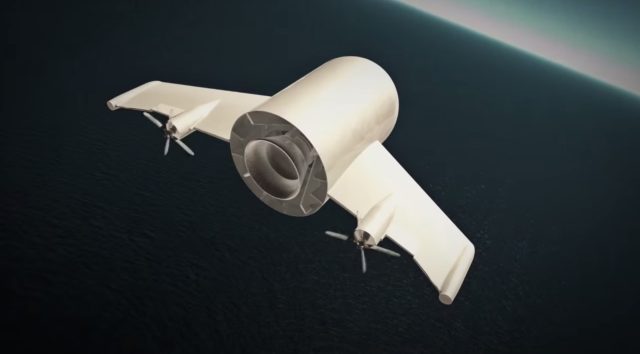
Airbus, the European aerospace giant, has unveiled Adeline: its answer to SpaceX's reusable space launch ambitions. Adeline, which stands for Advanced Expendable Launcher with Innovative engine Economy, uses a rather novel solution to get the first stage engines back in one piece: it has wings and propellers that allow the engines to follow a ballistic trajectory, and then fly like an airplane back to a runway.
All current space launch systems—SpaceX's Falcon 9, Airbus' Ariane 5, Russia's Soyuz, etc.—are expendable. During every single rocket launch, the rocket engines and fuel tanks fall back to Earth, usually into the ocean, never to be used again. Rocket engines are not cheap: Orbital Sciences paid around $1 billion (£600 million) to Roscosmos for 20 RD-180 rocket engines.
This is why companies like SpaceX, and now Airbus, are developing technologies that can bring the rocket engines back to the launchpad, so that they can be reused. SpaceX, which is currently leading the charge in this area, says that it wants to reuse rocket engines and fuel tanks within "single-digit hours" of their return. Depending on who you talk to, and the configuration of the rocket, current space launch prices are somewhere around $250-500 million; with reusable components, SpaceX wants to get that price down below $100 million.
Which brings us neatly onto Adeline. Airbus says that its reusable tech has been in secret development since 2010, but it won't be ready for use until at least 2025-2030; Ariane 6, due in 2020, is the company's current priority. Where SpaceX attempts to return the entire first stage (the big fuel tank and the rocket engines) to the launchpad, Adeline will return just the engines and the avionics, leaving the fuel tank to fall into the ocean as usual.
SpaceX and Airbus have very different methods of return, too. Falcon 9 keeps some fuel in reserve, which is used to slow the first stage's descent. Adeline detaches from the fuel tank, continues on a ballistic path, and then eventually uses winglets and propellers to land horizontally on a runway, a bit like a UAV. The main benefit of this method, at least as Airbus tells it, is that it requires much less fuel than SpaceX's method.
It's worth pointing out that most of the rocket's value is in the engines, not the fuel tank—though obviously, if SpaceX can safely land the fuel tank, that may make up for the additional fuel required. SpaceX hasn't successfully landed a Falcon 9 first stage, but it's getting pretty close. With Airbus focusing on Ariane 6 for now, SpaceX's reusable launcher should be ready quite a few years ahead of the competition.
So far, SpaceX and Airbus are the only two major players to announce their reusable rocket plans. The United Launch Alliance (Boeing-Lockheed) says its upcoming Vulcan may be partially reusable, though the plan is pretty wild: a helicopter will capture the falling engines mid-air. Russia, if it is working on reusable tech, hasn't announced anything yet.
reader comments
100